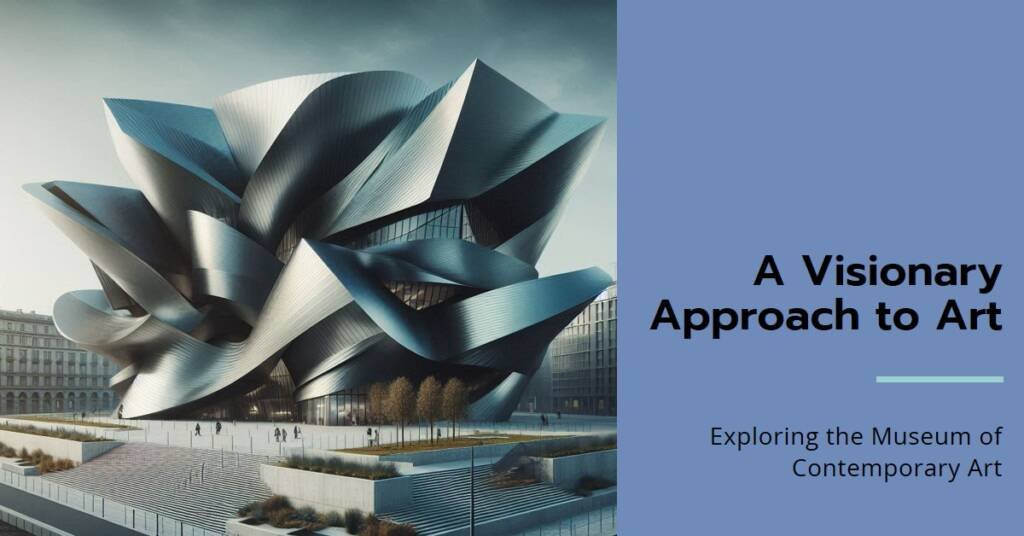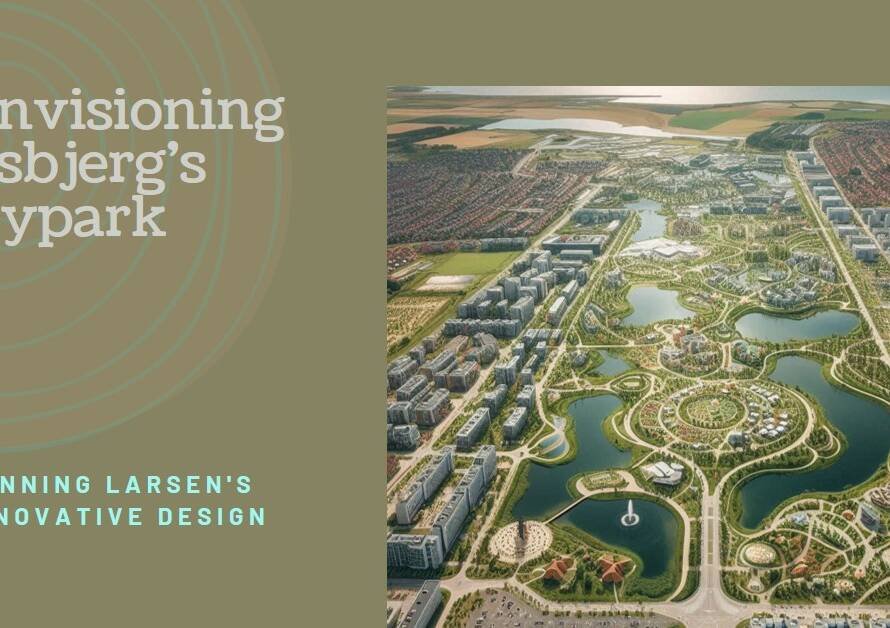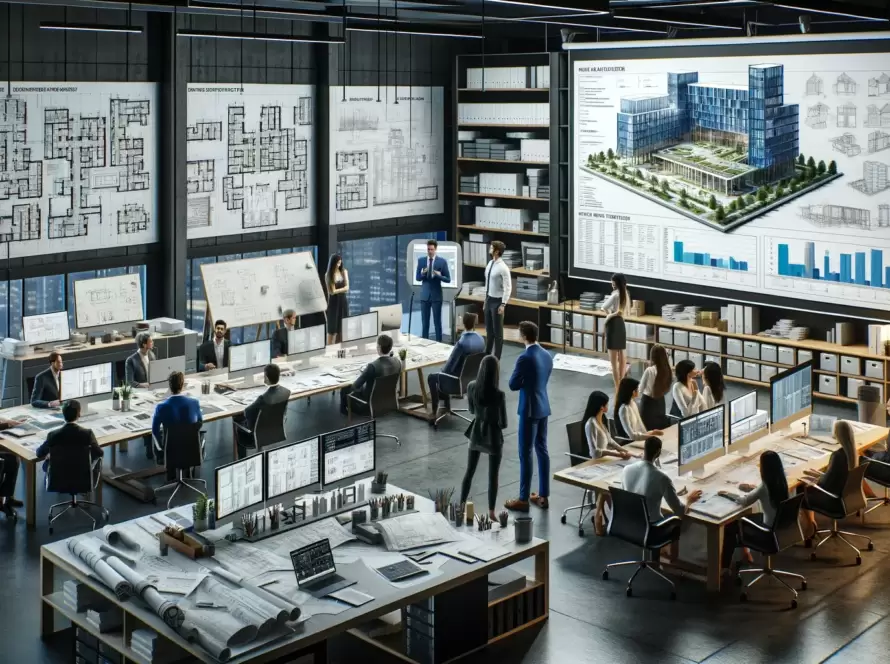
Table of Contents
- Introduction to the Museum of Contemporary Art
- The Visionary Architect: David Adjaye
- Design Philosophy and Conceptual Framework
- Sustainability and Environmental Considerations
- Architectural Highlights and Features
- Community Engagement and Cultural Impact
- Exhibitions and Collections: A New Era for Contemporary Art
- Visitor Experience and Accessibility
- Future Perspectives: The Role of the Museum in Art and Society
Introduction to the Museum of Contemporary Art
The Museum of Contemporary Art, designed by the innovative firm Adjaye Associates, is a pivotal institution within the contemporary art landscape. Situated in a dynamic cultural district, this museum serves as a beacon for artistic expression and community engagement. The vision behind the museum’s creation is rooted in a commitment to foster dialogue and inspire creativity, making it a vital resource for artists, curators, and the general public alike.
Conceived as a space that not only showcases visual arts but also embraces a diversity of cultural narratives, the Museum of Contemporary Art is more than just a gallery. It is a cultural hub intended to host a variety of events, exhibitions, and educational programs, thereby enriching the local community’s engagement with contemporary art. Adjaye Associates, known for their holistic approach to architecture, have integrated local context and cultural relevance into the design, creating a unique environment that appeals to both art enthusiasts and casual visitors.
This contemporary museum emphasizes accessibility and inclusivity, ensuring that a wide audience can appreciate and interact with the myriad of artistic expressions it houses. The thoughtful layout and spatial design invite exploration and discovery, prompting visitors to immerse themselves in the artworks and the narratives they portray. With a focus on innovation and inspiration, the museum embodies the ethos of contemporary art, reflecting the complexities and diversities of today’s society.
As we delve deeper into the museum’s architectural aspects, curation strategies, and community impact in the following sections, it is essential to recognize the significance of this space. The Museum of Contemporary Art stands as a testament to the transformative power of art, effectively bridging the gap between creators and viewers in an increasingly interconnected world.
The Visionary Architect: David Adjaye
David Adjaye, a prominent figure in contemporary architecture, is best known for his innovative design philosophy and ability to merge his cultural heritage with modern aesthetics. Born in Tanzania to Ghanaian parents, Adjaye’s multicultural upbringing significantly informs his architectural approach. His work is characterized by a profound sensitivity to context, place, and the narrative of identity, which permeates through various projects spanning the globe.
One of Adjaye’s notable earlier works is the **Stephen Lawrence Centre** in London, which not only serves as a memorial but also functions as a center dedicated to education and community support. This project showcases his commitment to social responsibility in architecture. Another significant contribution is the **Smithsonian National Museum of African American History and Culture** in Washington, D.C. This landmark building received widespread acclaim for its intricate façade and thoughtful integration of African American history, ensuring that the narratives of marginalized communities are brought to the fore in a striking manner.
Adjaye’s architectural style is often described as sculptural and contextually responsive, utilizing materials in a way that reflects both local environments and broader cultural themes. He often employs warm tones and textural contrasts, which imbue his structures with a sense of warmth and accessibility. Furthermore, his practice emphasizes sustainability, aiming to create spaces that are not only aesthetically pleasing but also environmentally responsible.
In addition to his physical structures, Adjaye’s contributions extend into academia and community engagement, where he actively participates in discussions regarding urbanism and architecture’s role in shaping cultural narratives. His multidisciplinary approach and passion for storytelling through architecture make him a compelling figure in the contemporary landscape. As we explore the Museum of Contemporary Art, it becomes evident how Adjaye’s distinct vision encapsulates a broader dialogue about identity, space, and cultural representation.
Design Philosophy and Conceptual Framework
The Museum of Contemporary Art designed by Adjaye Associates embodies a forward-thinking approach, integrating contemporary architectural principles with the theme of artistic expression. At its core, the design philosophy aims to facilitate the fluid interaction between art, audience, and environment. The museum stands not just as a repository for contemporary art but also as a dynamic space for community engagement and cultural dialogue. The architecture itself serves as a canvas that reflects the themes inherent in the diverse spectrum of contemporary artworks.
A primary consideration in Adjaye’s design is the relationship between the museum and its surrounding community. The concept emphasizes inclusivity, aiming to create an open and welcoming environment that invites participation from a broad array of visitors. This engagement is further reflected in the museum’s layout, which encourages exploration and interaction. Pathways are designed to guide visitors through various exhibits while facilitating a flow that enhances their experience of contemporary art in an immersive manner.
The architectural elements employed are deliberately chosen to evoke elements of cultural identity. Adjaye Associates leverage local materials and design motifs that resonate with the historical context of the site, fostering a sense of belonging and relativity amongst visitors. The use of natural light, for instance, is integral to the museum’s design, illuminating spaces in a way that changes the perception of art depending on the time of day. This interplay between light and space draws a deeper connection to the artworks displayed, accentuating their narratives.
Overall, the design philosophy of the Museum of Contemporary Art reflects a visionary approach that intertwines contemporary aesthetics with the essence of community, accessibility, and a profound respect for cultural identity. Through this architectural endeavor, Adjaye Associates aspire to redefine not only how art is experienced but also how it fosters community connection and cultural reflection.
Sustainability and Environmental Considerations
The Museum of Contemporary Art designed by Adjaye Associates exemplifies a pioneering approach towards sustainability in its construction and operational philosophy. In today’s architectural landscape, sustainability is not just an option but a necessity. The museum integrates eco-friendly materials sourced locally, significantly reducing the carbon footprint associated with transportation. By using materials such as recycled steel and sustainably sourced timber, the design prioritizes environmental responsibility while promoting durability and aesthetic value.
Moreover, the incorporation of energy-efficient technologies plays a crucial role in the museum’s sustainable framework. Solar panels positioned strategically on the roof harness natural energy, contributing to the building’s power needs and minimizing reliance on non-renewable resources. Additionally, advanced insulation techniques are employed to enhance thermal regulation, thereby reducing heating and cooling energy consumption. The careful selection of glass for the façade also reflects natural light, optimizing illumination within the museum without the adverse effects of excessive heat gain.
Beyond mere aesthetics and operational efficiency, the museum’s design embodies a commitment to environmental stewardship, aligning with its mission to foster cultural awareness and community engagement. This focus on sustainability extends to educating visitors about the importance of resilient architectural practices and their role in combating climate change. By exemplifying the potential of contemporary architecture to harmonize with ecological principles, the Museum of Contemporary Art serves not only as a cultural hub but also as a beacon of sustainable innovation.
In essence, the project encapsulates the integral role of sustainability in modern architecture, promoting a future where ecological considerations are foundational in the development of public spaces. This vision is pivotal for the museum’s identity and its impact on future generations.
Architectural Highlights and Features
The Museum of Contemporary Art, designed by Adjaye Associates, stands as a remarkable synthesis of innovative architectural techniques and a deep understanding of art’s experiential needs. The exterior of the museum captivates both the casual observer and the architectural enthusiast with its striking geometric form, which reflects the dynamism of contemporary art itself. The building’s facade, formed from a material palette that includes concrete and glass, not only offers durability but also provides a transparent relationship between the interior and the exterior environment, inviting the public to interact with the artistic experience housed within.
Upon entering, visitors are greeted by a multi-level atrium that serves as the heart of the museum. This expansive space is characterized by soaring ceilings and abundant natural light, which accentuates the artworks displayed and creates an uplifting atmosphere. The careful orchestration of light serves to enhance visual perception, allowing visitors to engage with art in a more intimate manner. The interior spaces are designed with flexibility in mind, accommodating a variety of exhibitions that showcase both traditional and avant-garde works. This adaptability allows the museum to host diverse programming, ensuring that the exhibitions remain fresh and relevant.
Moreover, the galleries are arranged to provide an intuitive flow throughout the museum, guiding visitors on a curated journey through different artistic expressions. Each gallery features wall treatments and lighting designed to suit the specific characteristics of the artworks it displays, enhancing their visual impact while maintaining the integrity of the artistic experience. The landscaping surrounding the museum further complements its architectural vision, featuring native plantings and contemplative spaces that encourage reflection. The integration of the natural environment with the architectural form fosters a harmonious dialogue between art, architecture, and nature, ultimately enriching visitor engagement and experience.
Community Engagement and Cultural Impact
The Museum of Contemporary Art, designed by Adjaye Associates, emphasizes a holistic approach to community engagement, seeking not only to serve as an artistic space but also as a cultural hub for local residents. Various programs and initiatives are meticulously crafted to foster a deep-rooted connection between the museum and its diverse audience. These efforts aim to enhance the cultural landscape of the area, creating a vibrant dialogue between art, education, and community participation.
One of the cornerstone programs involves collaborative workshops that invite local artists, students, and families to actively participate in the creative process. These workshops serve as a platform for sharing ideas, skills, and experiences, allowing participants to express their identities and narratives through art. This inclusive approach demystifies contemporary art, making it accessible to a broader audience while instilling a sense of ownership among community members.
Additionally, the museum hosts a variety of community events that celebrate local culture and history. These events often feature performances, talks, and exhibitions that reflect the cultural tapestry of the surrounding area. By showcasing local talent and narratives, the Museum of Contemporary Art reinforces its commitment to cultural representation and diversity. This initiative not only highlights the significance of the community’s heritage but also encourages ongoing dialogue about contemporary issues and artistic expressions.
Outreach initiatives further extend the museum’s impact, especially in underserved neighborhoods. Programs focusing on educational partnerships with schools and community organizations enable access to art for those who may otherwise lack exposure. Field trips, guided tours, and curated exhibitions are tailored to engage young people, sparking their interest in contemporary art and fostering a lifelong appreciation for creativity. It is through such programs that the museum cultivates a thriving arts culture, integral to the overall development and enrichment of the community.
Exhibitions and Collections: A New Era for Contemporary Art
The Museum of Contemporary Art by Adjaye Associates is designed to be a vibrant hub for the exploration and appreciation of contemporary art. At the heart of the museum’s mission is a commitment to showcasing a wide range of exhibitions that reflect the diversity of voices in the art world today. The museum’s programming is a testament to the belief that art is a powerful medium for social change, dialogue, and reflection.
As a pivotal venue, the museum will host temporary exhibitions that will include works from both emerging and established artists. This dedication to presenting varied artistic expressions will encourage a dynamic conversation among different art forms, cultures, and perspectives. The exhibitions will be carefully curated to represent artists who engage critically with societal issues, thereby inviting audiences to reflect on their own experiences within a global context.
The curation philosophy of the museum emphasizes inclusivity and innovation. By integrating multidisciplinary practices, including visual arts, performance, and digital media, the museum aims to broaden the horizons of contemporary art. Curators will collaborate closely with artists to ensure that collections are not merely a display of art objects but rather a curated experience that invites visitor interaction and engagement.
This approach aligns with the museum’s goal to be an incubator for artistic experimentation, where new ideas can flourish, and where underrepresented voices can gain visibility. By fostering an environment that encourages cross-border exchange, the Museum of Contemporary Art will make significant contributions to the ongoing global dialogue surrounding contemporary practices and perspectives in art. Visitors can expect to encounter exhibitions that challenge conventions and provoke thought, making this museum a landmark destination for art lovers and cultural enthusiasts alike.
Visitor Experience and Accessibility
The Museum of Contemporary Art, designed by Adjaye Associates, has been meticulously crafted to enhance the visitor experience through a commitment to accessibility and engagement with diverse audiences. From the outset, the architects prioritized creating a welcoming environment that encourages exploration and interaction with contemporary art.
One of the critical components enhancing visitor experience is the integration of accessible amenities throughout the museum. Features such as ramps, elevators, and wider pathways ensure that individuals with mobility challenges can navigate the space comfortably. Additionally, the museum provides audiobooks, braille signage, and tactile exhibitions, making art accessible to visitors with sensory impairments. This inclusive approach demonstrates a dedication to ensuring that every visitor can appreciate and engage with the art on display.
The museum offers guided tours that cater to various demographics. Educational programs designed for families, students, and seniors focus on fostering a deeper understanding of contemporary art and its societal implications. These tours are designed not only to engage visitors but also to encourage thoughtful discussions about the art. Furthermore, the programming often includes workshops and hands-on activities that provide interactive experiences, allowing visitors to connect more profoundly with the creative process and the themes explored in the exhibits.
The physical layout of the museum aligns seamlessly with its mission of accessibility. Open spaces and strategically placed seating areas invite visitors to take their time, reflect, and discuss the artwork around them. Natural lighting is cleverly utilized to enhance artworks and make the environment more inviting. By thoughtfully considering visitor experience, the Museum of Contemporary Art stands as a beacon for inclusivity, ensuring that contemporary art is not an elitist endeavor but a vital part of the cultural fabric, accessible to all demographics.


Future Perspectives: The Role of the Museum in Art and Society
The Museum of Contemporary Art, designed by Adjaye Associates, stands at the crossroads of innovation and tradition within the evolving landscape of contemporary art. As art practices continue to diversify and expand, the role of museums is also shifting. They are no longer just repositories of art; they are becoming active participants in dialogues about culture, identity, and social issues. The future museum is expected to be a dynamic space that fosters community engagement, inclusivity, and collaboration.
The trends shaping contemporary art, such as the rise of digital mediums, performance art, and socially engaged practices, reflect broader societal changes. As artists increasingly address issues like climate change, social justice, and globalization through their work, museums must adapt by showcasing diverse voices and engaging with these pressing themes. The Museum of Contemporary Art, with its visionary design, is well-positioned to accommodate such innovations. Its architecture enhances the visitor experience, making art accessible and inviting a broader audience to participate in cultural conversations.
Furthermore, the role of the museum in education is becoming increasingly significant. Future cultural institutions are expected to facilitate learning experiences that extend beyond traditional exhibition formats. This includes interactive installations, workshops, and community programs that cater to diverse demographics. The design philosophy of Adjaye Associates emphasizes openness and fluidity, potentially providing multifunctional spaces conducive to learning and collaboration. These approaches could redefine visitor engagement, allowing museums to serve as centers of knowledge and creativity.
In conclusion, the Museum of Contemporary Art represents a forward-thinking model for what museums can be in the 21st century. By embracing inclusivity, educational initiatives, and a responsive artistic framework, it is poised to contribute significantly to both the contemporary art scene and society at large, influencing how future institutions engage with the public.



